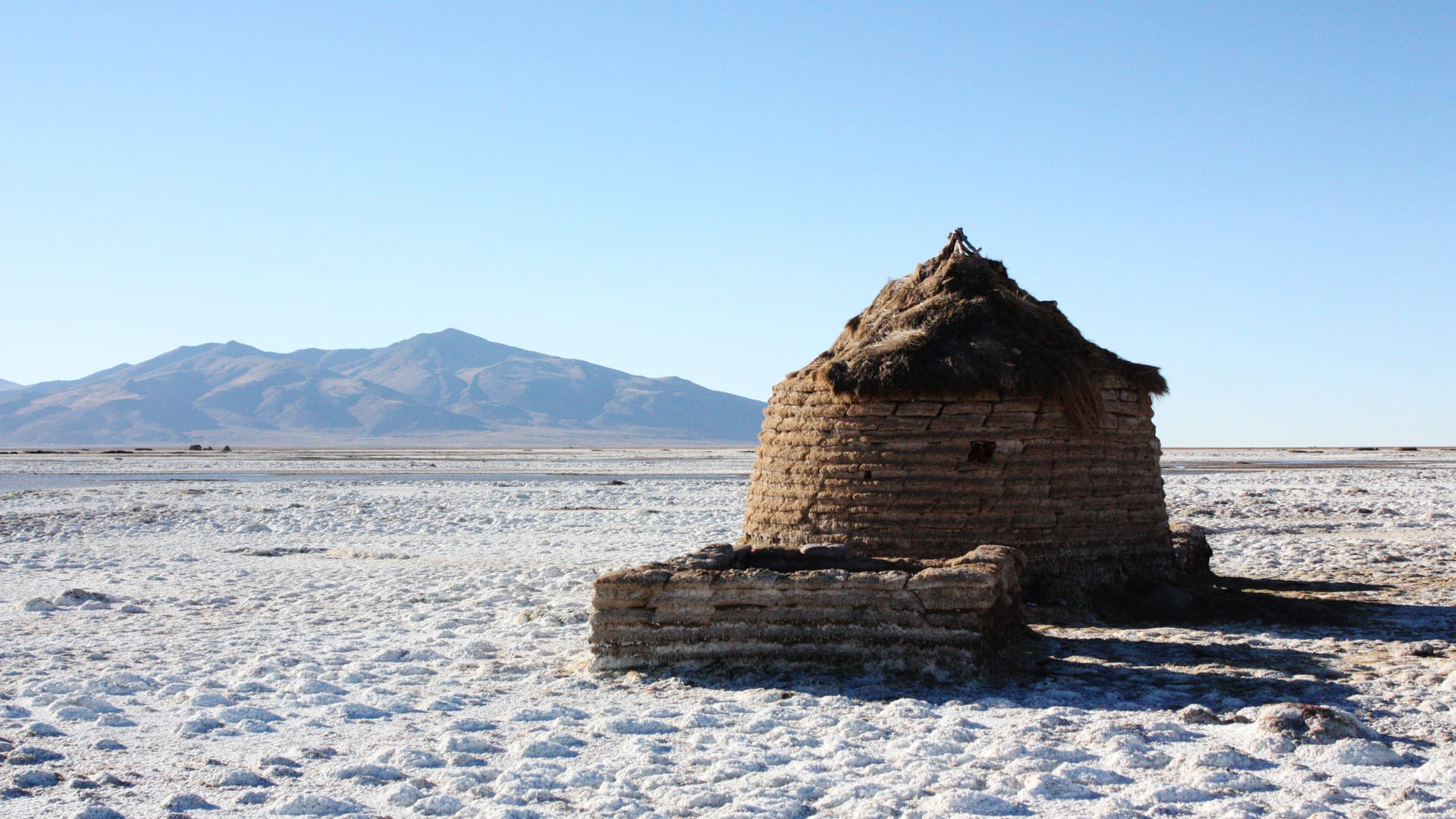Sustainable livelihoods of the Chipaya people in Bolivia
Climate change threatens the existence of the Chipaya people by making traditional water management practices non-viable. A sustainable future can be secured by introducing new, sustainable land management technologies.

The Chipaya people: guardians of Bolivia's Oruro region
The Chipayan people live in Bolivia’s Oruro region, on the north of Lake Coipasa. Their land is surrounded by salt flats and crossed by the Lauca River. This area’s cold-arid climate with extreme temperatures influences the Chipayan people’s religion. Natural elements such as water, rain, fire, wind and Mother Earth (called Pachamama) are revered and respected to ensure survival.
The only available natural resources are the highly saline soil, pastures and water, which the Chipayan people have cleverly managed to enable cultivation of quinoa cereal and grazing for livestock, such as sheep and llamas. A scarcity of resources, as well as geographical isolation, have contributed to the Chipaya community’s unique culture and are expressed in its beliefs, language, organisational and economic systems, clothing and architecture. For example, the Chipaya’s small, conical houses built from moist clay, are structures which are uniquely found in this area.

Traditional Chipaya water management practices
To make their territory habitable and productive, the Chipayas have historically used the ancient land and water management systems that gave rise to their indigenous nomenclature “water men” (qhas qut suñi). These three water management practices include: Pikhi (to direct water from the Lauca River through channels), Pikh (to contain and hold water) and Lamea (a practice of flooding of salt flats during the winter to extract soil and leave land available for arable activity).
These three measures were traditionally accompanied by with a religious ceremony called Lauca Arunta or Mallku Lauca, where animal sacrifices and libations were offered to the river to secure its continued role in food production and thus the continuity of life.
Sustainable land management strategies to adapt to climate change
Today, these ancient practices, along with the local Chipaya community, are close to extinction due to extreme weather conditions, including droughts and a lack of water, resulting from climate change. Poverty is forcing the younger generation to migrate to cities in search of work. Modernisation to facilitate climate change adaptation and mitigation would bring prosperity and prevent extinction of the Chipaya people’s endogenous technologies.
Securing a post-2030 future for the Chipaya community and other indigenous Andean cultures requires different forms of engagement with sustainable land management strategies. New technologies may also need to be introduced to enable adaptation to climate change and pave the way to alternative land-based livelihood strategies. The creation of new jobs and new forms of micro-economic activities, including for women and young people, could prevent migration to cities. If the Chipaya community’s indigenous culture can adapt, while retaining its authenticity and continued evolution, these people could find themselves on the right pathway to a sustainable long-term future, without leaving people or places behind.
Industrial sectors
Agriculture, forestry and fishing
Water supply; sewerage, waste management and remediation activities
Activities of households as employers; undifferentiated goods- and services-producing activities of households for own use
Habitat at the New European Bauhaus Festival and the STI Forum
This story is part of “Habitat: Embracing change in the post-2030 future”. Habitat was discussed at the side event “New habitats for the post-2030 future” during the New European Bauhaus Festival on 10 June 2022. At the STI Forum of 2023, a science policy brief recommendation on Habitat was published under the category “science-policy-society interface”: Enablers for transformative change to sustain people and nature-centred world. Download recommendation >
Contribution to story
- This is “HABITAT: Embracing Change in the Post 2030 Future” Exhibition designed and curated by Dr Sandra Piesik, 3 ideas B.V in collaboration with HABITAT Coalition and VITO
- Copy editing by Katleen Vandormael, Communication Manager G-STIC, VITO
- Cover image: Chipaya Indians © Zak Waters, Alamy Stock Photo
- “HABITAT: Vernacular Architecture for a Changing Planet” published by Thames & Hudson
- “HABITAT: Vernacular Architecture for a Changing Planet” published by Abrams
- “Habitat: Traditionelle Bauweisen für den globalen Wandel” published by DETAIL Special
- “Habiter la planète: Atlas mondial de l'architecture vernaculaire” published by Flammarion First Prize Winner at “J’aime le livre d’art”, Paris 2017
- “HABITAT: Arquitectura vernácula para un planeta cambiante” published by Blume
- “HABITAT: Vernacular Architecture for a Changing Climate’ published by Thames & Hudson UK, USA, and Shufuhsa
